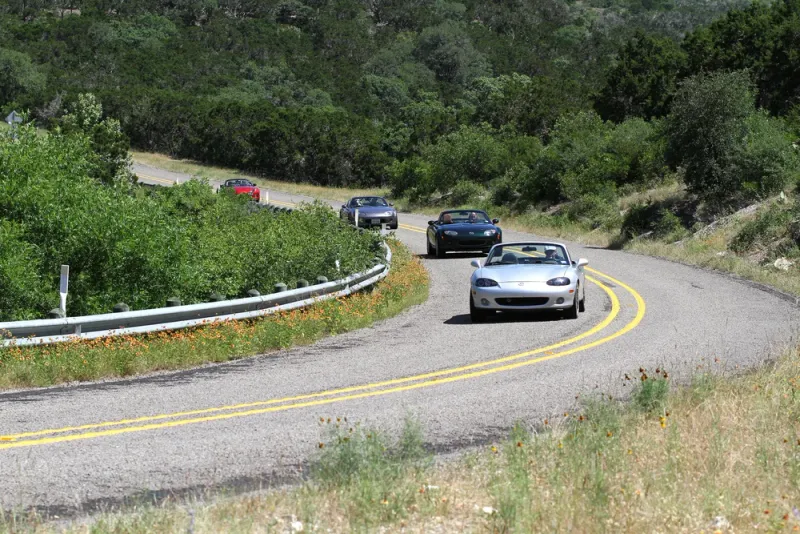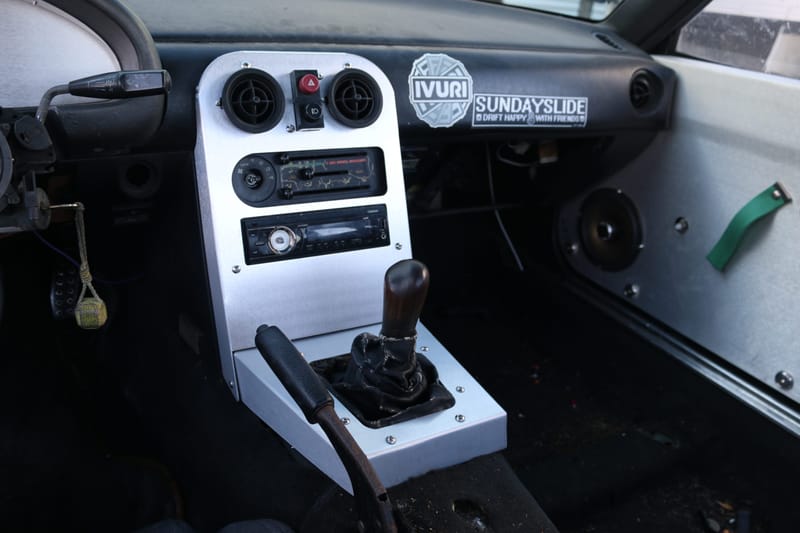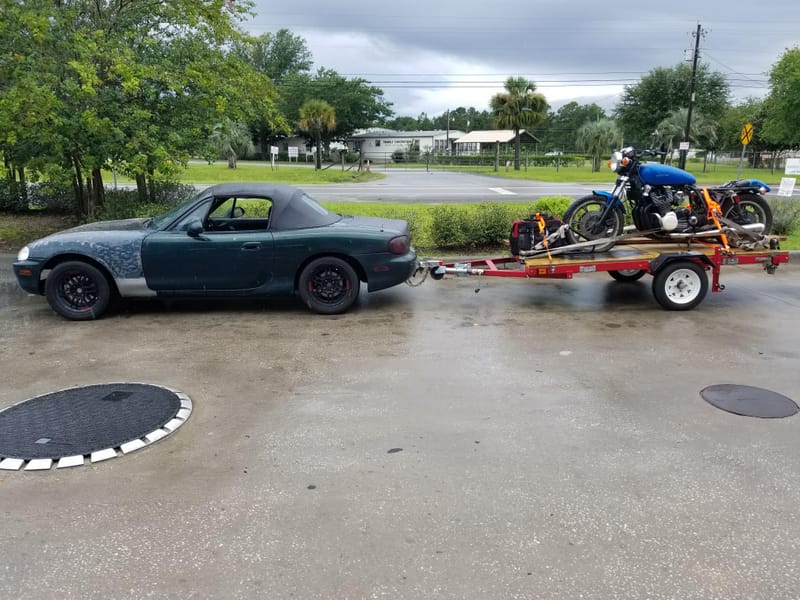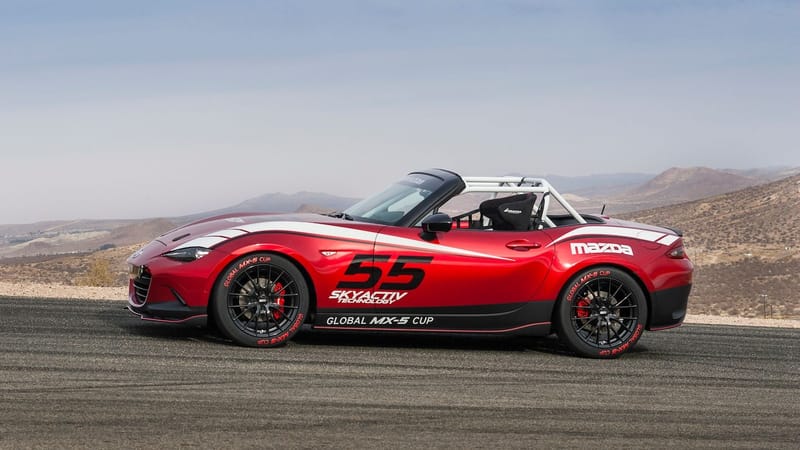Understanding the Genius Behind the Miata Chassis
Balance as its center point, Mazda engineered a front-mid engine layout, rigid driveline spine, and double-wishbone geometry to keep the tires working in harmony.
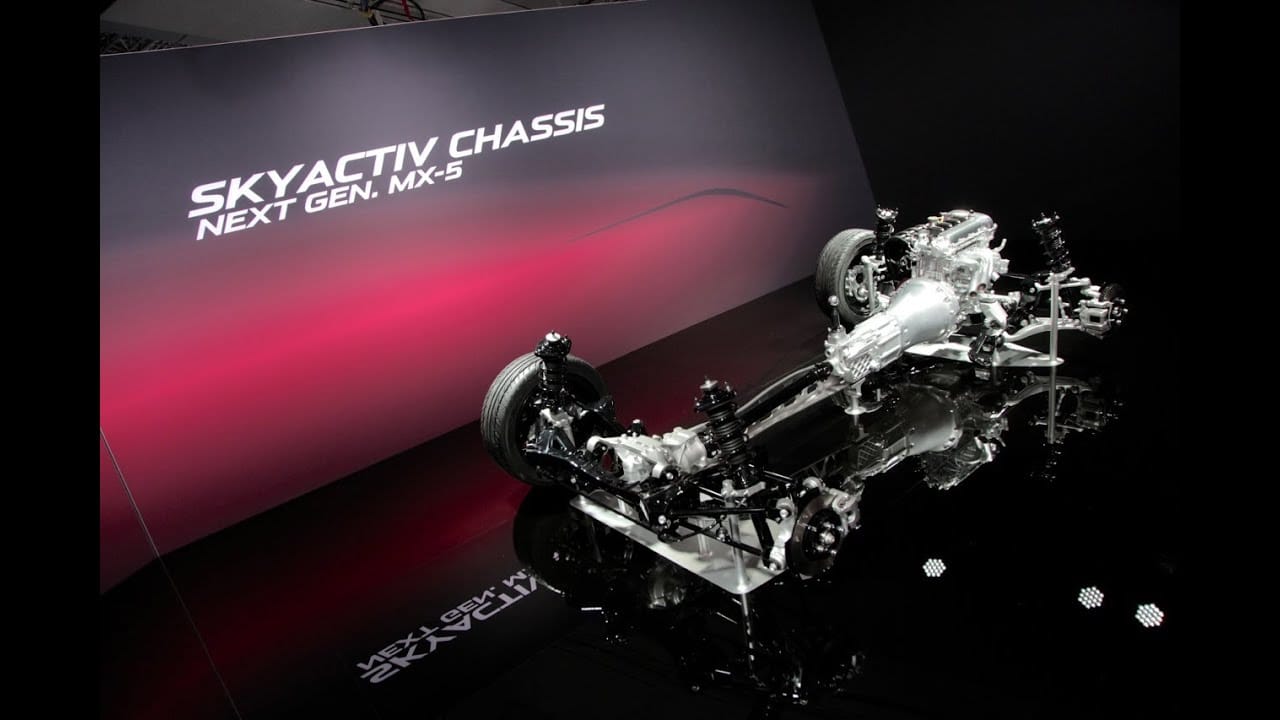
If you think the Miata’s party trick is power, you’re missing the point. The magic is in how the car is packaged, how the suspension keeps the tires happy, and how every gram and bracket works to keep feedback clean. The chassis is a system, front-mid packaging, a rigid driveline spine, geometry-savvy suspension, smart stiffness, and ruthless weight saving, that turns ordinary parts into an extraordinary driver’s car.
Lightness, Balance, Feedback
Mazda built the MX-5 around three pillars. Keep it light so inertia never gets in the way. Keep it balanced so the car rotates naturally without surprises. Make it chatty so the driver always knows what the tires are doing. That philosophy shows up everywhere: the engine sits low and rearward for a front-mid layout, the driveline is tied together by a spine so it acts as one piece, the suspension is chosen for camber control instead of packaging convenience, and materials are picked to delete weight without deleting feel. The result is a car that pivots with small inputs, communicates early about grip, and stays friendly even when you overstep a little.

Equally Distributed
Miatas place the inline-four behind the front axle line and as low as practical. Shoving the heaviest lump rearward pulls mass inward toward the wheelbase center and drops the center of gravity. That lowers the polar moment of inertia so the car changes direction quickly and settles cleanly after a weight transfer. Mazda also targets roughly equal front and rear static loads so the car behaves predictably on entry, mid-corner, and exit. Short overhangs finish the job: there’s less weight hanging beyond the axles to resist rotation, which is why the car feels eager to turn but never nervous.

The Power Plant Concept
Most cars hang the transmission and differential separately in rubber and hope for the best. The Miata bolts the transmission to the differential with a rigid beam called the Power Plant Frame, then ties that assembly to the body. Under throttle or over bumps, the engine, gearbox, and diff move together instead of tugging on each other. That reduces lash, steadies pinion angles, and keeps the shifter feel crisp. It also cuts down on the number of vibration paths into the cabin. Because the PPF defines the geometry of the driveline, its alignment matters: if you’ve got odd vibes or a shifter that suddenly feels harsh after clutch or diff work, checking PPF position and mount condition is step one.
NA and NB (1990–2005): Double Wishbones All Around
These cars use unequal-length upper and lower control arms at both ends. The reason is geometry control. As the body rolls, the shorter upper arm pulls the top of the wheel inward, creating negative camber gain that keeps the tire upright and the contact patch loaded. The arms also let Mazda set roll center heights and anti-dive/anti-squat values that feel natural under braking and acceleration. Eccentric bolts at the arm pivots give real alignment range from the factory, so you can dial meaningful camber, caster, and toe without aftermarket links. The result is that signature mid-corner bite and linear breakaway that made early Miatas such great teachers.

NC (2006–2015): Wishbone Front, Multi-Link Rear
The front stays double-wishbone for that crisp camber control, while the rear switches to a multi-link. Going multi-link in back gives Mazda extra levers to tune toe and camber curves under load. As the outside rear compresses in a corner, the geometry can gently steer the wheel toward stability, keeping the car planted over bumps and at speed without needing a punishing spring rate. The NC also rides on a much stiffer body shell, so the suspension does the bending instead of the chassis. Steering remains hydraulic, with kinematics and bushing rates chosen to filter kickback while preserving messages from the road.
ND (2016–present): Wishbone Front, Multi-Link Rear, Smart Assist
The ND returns to a lighter, tighter shell with lots of high-tensile steel and strategic aluminum in arms and knuckles to cut unsprung mass. Up front, double wishbones keep the tire working in roll; in back, multi-link tuning refines stability on rough surfaces. Electric assist arrives, but Mazda uses a double-pinion design so the assist motor doesn’t numb the messages coming up the rack. Even the steering column’s U-joint angles are chosen to remove tiny notches around center. From 2022, software steps in with Kinematic Posture Control to subtly shape body motion without adding hardware weight.

Chassis Stiffness
Roadsters fight cowl shake because there’s no roof to close the box. Mazda steadily tightened the structure through the generations with better load paths and higher-strength steels. The late NB refresh brings noticeable gains that clean up ride and mid-corner precision. The NC leaps ahead with a significantly stiffer shell, which is why it feels so solid over broken pavement. The ND uses smart material placement to pull serious weight out versus NC while keeping torsional rigidity high, so geometry stays true when the suspension is loaded. A stiff shell means the alignment you set is the alignment you get under load.
Kinematic Posture Control: Extra Body Control, Zero Hardware
Starting in the 2022 model year, ND Miatas add a control strategy that lightly applies the inside-rear brake during high-g cornering. That tiny drag “pulls” the inside rear down, which tempers roll and makes yaw build more linearly. Get back on throttle and the system can maintain a hint of that brake to keep the car neatly rotated, a mild limited-slip-like effect without adding a single part. It’s one of those quiet, clever touches that makes the car feel calmer and more planted without stealing the playful character.
Steering Feel and Human Factors
Rack location and mounting stiffness set the baseline for on-center clarity. Ackermann and scrub radius decisions define how the front tires talk to you at full lock and mid-corner. Bushing durometers filter the harsh stuff without smearing the messages you need to drive by. On the ND, the double-pinion electric system isolates the assist gear from most road forces so you still sense micro-changes in load, and the column geometry is chosen so tiny stick-slip moments at center don’t exist. Pair that with the front wishbones’ camber gain and you get a wheel that builds self-aligning torque predictably and tells you what the tires are thinking before they let go.

How the Pieces Work Together
Put the masses near the middle and you get easy rotation. Use a rigid driveline spine and you get a clean, mechanical shift with minimal lash. Choose wishbones up front and you keep the tire working in roll. Use a multi-link in back and you can introduce just-right toe-in under compression for stability without dulling rotation. Add real body stiffness and the geometry you tuned is the geometry you feel. Layer in Kinematic Posture Control and you get extra polish in transitions without bolting anything on. None of these choices is exotic on its own; together they make the car feel of one piece.
Tuning to Perfection.
Factory adjusters make alignment changes meaningful. For a lively street-first setup on NA and NB, adding a bit more negative camber at both ends and a whisper of front toe-out sharpens turn-in without making the car darty, while keeping rear toe near zero maintains that friendly rotation. The same logic applies to NC and ND, adjusted to tire choice. Older cars benefit a lot from smart bracing; reinforcing the front shock towers and key underbody points “closes the box” around the open cowl and reduces the big-bump shimmy that can mask what the front tires are saying. Keep wheel and tire packages light; the suspension is sensitive to unsprung mass, and heavy wheels dull both ride and steering messages. If driveline harshness or new vibrations appear after clutch or differential work, verify the Power Plant Frame alignment and mount condition before chasing ghosts with random part swaps.
How a Miata Feels Like on a Turn
On entry, the front takes a set with a small, confidence-building bite rather than a sudden snap. Mid-corner, the camber control keeps the contact patch loaded so you can lean on the outside tires without the steering getting rubbery. On exit, the rear geometry and balanced weight distribution mean you can pick up throttle early without the car washing wide. If you go in a bit hot, the car talks early and lets you correct with a breath of steering or throttle rather than punishing you. That’s the difference between a chassis that flatters and a chassis that fights.

